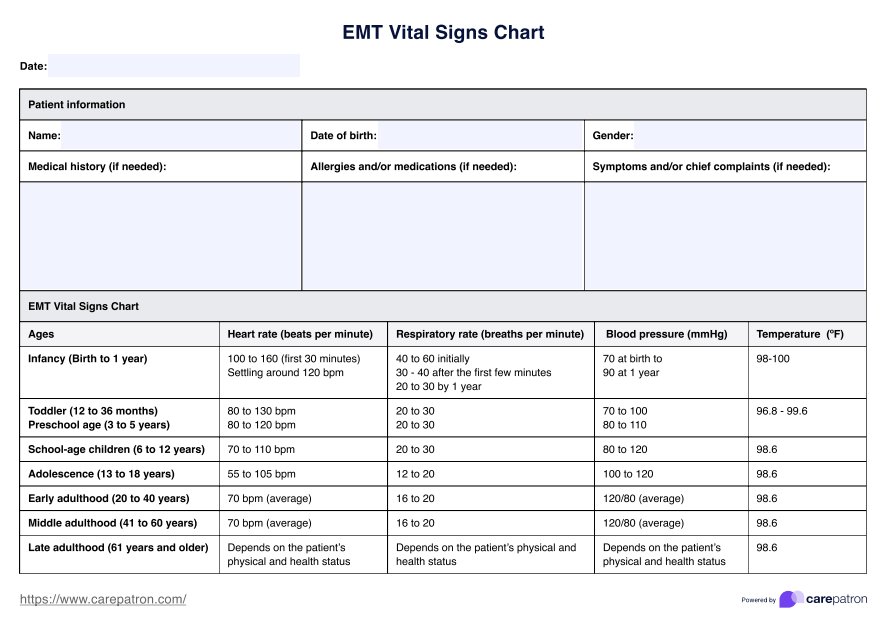Paramedics and certified or in-training emergency medical technicians typically use an EMT Vital Signs Chart.

EMT Vital Signs Chart
Quickly refer to this EMT Vital Signs Chart when evaluating your patients during emergencies. Get this resource for free!
Use Template
EMT Vital Signs Chart Template
Commonly asked questions
The EMT Vital Signs Chart is used to assess and monitor patients during emergencies on their way to the hospital. They may also be used during the EMT's training period.
The EMT Vital Signs Chart can be used in multiple ways. It can be used as a reference, guide, educational resource, and document where one can record the patient's vital signs.
EHR and practice management software
Get started for free
*No credit card required
Free
$0/usd
Unlimited clients
Telehealth
1GB of storage
Client portal text
Automated billing and online payments











